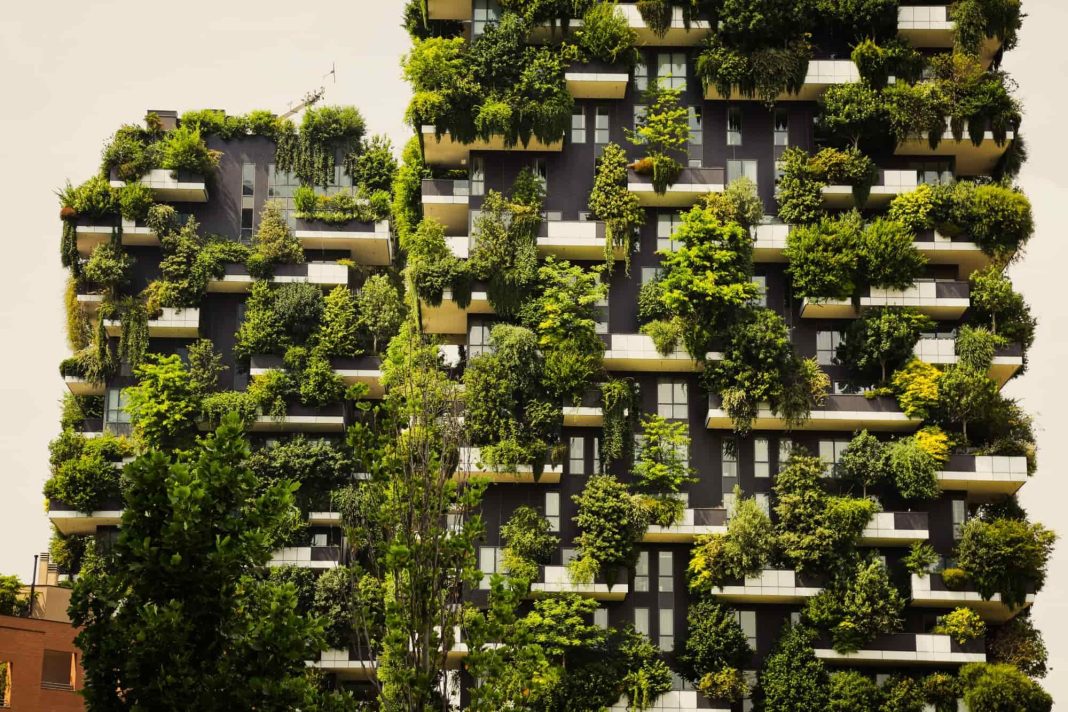The concept of sustainability has emerged as a pivotal driver of change across various sectors in an era marked by rapid urbanisation, resource depletion, and heightened environmental awareness. One area profoundly impacted by this paradigm shift is the construction and management of buildings. With growing recognition of the substantial ecological footprint associated with traditional building practices, there has been a significant push towards adopting sustainable approaches in the built environment.
In today’s world, the need for sustainability has become increasingly important, extending to the construction and operation of buildings. Sustainable buildings aim to minimise environmental impact while maximising energy efficiency and occupant comfort. This blog explores the concept of sustainability in buildings, highlighting its significance, key elements, benefits, challenges, government initiatives, and more.
Understanding Sustainability in Buildings
Building sustainability refers to designing, constructing, and operating structures that reduce negative environmental impacts, conserve resources, and promote long-term economic viability and occupant well-being.
Importance of Sustainability in Buildings
Addressing environmental concerns like climate change, resource depletion, and pollution necessitates the significance of sustainable buildings. By adopting sustainable practices, buildings can significantly reduce energy consumption, carbon emissions, and waste generation.
Key Elements of Sustainable Buildings
Sustainable buildings incorporate various elements, including energy efficiency, water conservation, material selection, indoor air quality, waste reduction, and renewable energy sources. These elements work together to create environmentally responsible and energy-efficient structures.
Environmental Responsibility in Building Design
Energy Efficiency
One of the primary focuses of sustainable building design is energy efficiency. It involves employing strategies to minimise energy consumption, such as high-performance insulation, efficient HVAC systems, LED lighting, and renewable energy technologies like solar panels.
Water Conservation
Water scarcity is a pressing global issue, making water conservation crucial in sustainable building design. Implementing water-efficient fixtures, rainwater harvesting systems, and greywater recycling can significantly reduce building water consumption.
Material Selection
Sustainability in buildings prioritise the use of environmentally friendly and low-impact materials. It includes selecting materials with recycled content, locally sourced materials to reduce transportation emissions, and utilising products with minimal or no volatile organic compounds (VOCs).
Indoor Air Quality
Creating a healthy indoor environment is another crucial aspect of sustainable buildings. It involves using low-emission building materials, providing adequate ventilation, and employing air filtration systems to enhance indoor air quality and occupant well-being.
Benefits of Sustainable Buildings
Environmental Benefits
Sustainable buildings contribute to preserving natural resources, reducing greenhouse gas emissions, and mitigating climate change. These buildings minimise their carbon footprint and help combat global warming by implementing energy-efficient measures and utilising renewable energy sources.
Economic Benefits
While sustainable in building design may require higher upfront costs, it offers long-term financial benefits. Energy-efficient buildings consume less energy, resulting in reduced utility bills. Additionally, green buildings often have a higher market value, lower operating costs, and attract environmentally conscious tenants.
Social Benefits
Sustainability in buildings creates healthier and more comfortable living and working environments. They prioritise occupant well-being by promoting natural lighting, thermal comfort, and good indoor air quality. Additionally, green buildings promote a sense of community and enhance the overall quality of life.
Challenges and Solutions for Sustainable Buildings
High Initial Costs
One of the main challenges in sustainable building design is the perception of high upfront costs. However, this can be overcome by considering long-term savings and benefits. Financial incentives, grants, and favourable financing options that governments and organisations provide can also alleviate the initial financial burden.
Lack of Awareness and Education
Many professionals and stakeholders in the construction industry may have limited knowledge about sustainable building practices. Promoting awareness and providing education and training programs can bridge this gap and encourage the adoption of sustainable design principles.
Regulatory Barriers
Existing regulations and building codes may not always support or prioritise sustainable building practices. Governments and regulatory bodies must update policies and codes to incentivise sustainable design and construction. It can include offering tax incentives, streamlining permitting processes, and setting higher environmental standards.
Innovative Technologies and Design Solutions
Innovation plays a key role in overcoming challenges in sustainable building design. The development of modern technologies, materials, and design solutions can make sustainable practices more accessible, affordable, and efficient. Embracing innovation and fostering collaboration between industry professionals and researchers is crucial to driving sustainable advancements.
Government Initiatives and Policies Promoting Sustainable Buildings
Tax Incentives and Rebates
Governments worldwide provide tax incentives, rebates, and grants to encourage sustainable building practices. These incentives can include tax credits for energy-efficient building systems, renewable energy installations, and green building certifications. Financial support helps offset the initial costs and encourages more widespread adoption of sustainable design principles.
Building Codes and Standards
Building codes and standards play a crucial role in shaping sustainable building practices. Governments and regulatory bodies increasingly incorporate energy efficiency requirements, water conservation standards, and environmentally friendly material guidelines into building codes. These regulations ensure that new construction meets minimum sustainability criteria.
Green Building Certification Programs
Green building certification programs, such as LEED, BREEAM, and Green Star, provide frameworks for assessing and recognising sustainable buildings. These programs evaluate various aspects of a building’s performance, including energy efficiency, water conservation, indoor air quality, and materials used. Certification encourages developers and owners to strive for higher sustainability standards.
Conclusion
Sustainability in buildings is a crucial aspect of addressing environmental challenges and promoting energy efficiency. By adopting sustainable design principles, buildings can minimise their carbon footprint, conserve resources, and create healthier and more comfortable spaces for occupants. Despite challenges, such as high initial costs and regulatory barriers, the benefits of sustainable buildings are significant. With the collaboration of architects, engineers, governments, and industry stakeholders, the future of sustainable building design looks promising.










